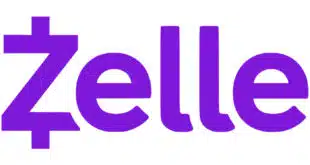The contrast between the approach in the U.S. and that in Europe underscores the importance of competition and innovation.
Many U.S.-domiciled payment networks are relevant, even dominant, globally, whereas few European payment systems are.
Europe and the United States are both served by a patchwork of retail, peer-to-peer, and interbank payment networks. But the U.S. is one enormous market. California, Florida, New York, and Texas don’t have their own payment systems. Yet, France, Germany, Italy, Poland, and Spain have their own distinct payment systems, payment habits, and preferences.
The lesson is that bigger home markets provide stronger platforms for building global payment networks.
The U.S. has the two genuinely worldwide retail “card” payment networks Mastercard and Visa, and also has the world’s reserve currency and leading currency for trade and foreign-currency-denominated debt. Europe has the global cross-border payment- messaging network Swift.
The U.S. also has the tier-two global payment networks American Express, Discover, and PayPal; the digital wallets Apple Pay, Google Pay, WhatsApp Pay, and Amazon Pay; and the money-transfer networks MoneyGram, Ria, and Western Union.
And both the U.S. and Europe have private-sector and central bank instant-payment systems. While system interoperability may eventually make these systems relevant planetwide, that’s a long way off. The instant-payment networks Mastercard Send and Visa Direct are global now.
Many American payment systems were started with the view that, while the U.S. was the launch market, their opportunity was global. National European payment systems, however, often don’t even view their opportunity as pan-European, much less global.
EU Poohbahs
Still, a traditional or alternative payment system with a better mouse trap and headquartered in Paris or Warsaw could deliver value in the U.S. market, and indeed on six continents. Critically, it would have to leverage its home-market user base and brand, and employ a mix of M&A, partnerships, and organic growth to achieve network critical mass abroad.
American and European payment-system landscapes and dynamics are more similar than not. Still, habits and preferences differ. While cash varies enormously by country, Europeans overall use far more cash than Americans.
Indeed, the ECB’s “Study on the payments in the euro area 2022” reported that 59% of payments in the euro-zone at the physical point of sale were made in cash. Yet, the Federal Reserve’s “2024 Findings from the Diary of Consumer Payment Choice” reported that only 18% and 16% of all U.S. consumer payments in 2022 and 2023, respectively, were made in cash.
A more robust revolving-credit market and market interchange fees funding a buffet of benefits and rewards make credit cards a more compelling consumer proposition in the U.S. In 2023, 57.3% of U.S. general-purpose card payments by value, and 40.3% of transactions, were credit. Whereas, in the first half of 2023, only 8.8% of EU general-purpose card payments value and 8.1% of transactions were credit.
The U.S. payments industry has been more innovative, pioneering the general-purpose card networks, credit cards, digital currencies, GPR prepay cards, digital wallets, and mobile acceptance.
EU payments regulation is more prescriptive. Brussels imposed price controls on interchange fees, mandated payments risk-management methodology, and required that banks allocate capital to provide fee-free payments.
While protectionist winds are blowing stronger on both sides of the Atlantic, the U.S. payments market is relatively open. EU poohbahs relentlessly call for “strategic autonomy” in payments, which is a euphemism for payments protectionism.
Nonetheless, there’s payment-system innovation in Europe.
Given its range of 44 countries, there’s greater diversity of alternative and traditional payment systems in Europe than in the U.S. That facilitates experimentation with different models, but a focus on home markets, lack of scale, and shareholders who are often only interested in their domestic markets have all hindered any scaling of European payment networks to international relevance.
Picking Winners
In 1985, there were 34 U.S. debit networks, most of which were regional, all owned by banks. Without encouragement from Washington, the market consolidated. Today, the U.S. is the most competitive debit card network market in the world, with half a dozen commercial national players and a handful of smaller cooperatives.
To the EC’s and ECB’s discomfort, the most plausible European retail-payment-system consolidators would have been a tier-two U.S. payment system like Discover or processor First Data. EU processing consolidators Nexi and Worldline own national debit networks, but have processor—not network—DNA.
But Europe has a fascinating and evolving patchwork of primarily national payment systems providing mobile, P2P, and retail payments. Through interoperation and M&A, there are early efforts to scale and extend delivery footprints and use.
In November 2022, Norwegian banks’ Vipps and Danske Bank’s Danish and Finnish MobilePay merged, creating a mobile-payments network of comparable size to Sweden’s Swish. In August 2022, Poland’s leading mobile-payment system, Blik, acquired Slovakia’s Viamo, and in 2023, it entered Romania. Italian mobile-payment network Satispay launched in Germany and Luxembourg in 2020 and in France in 2022.
Owned by Western European banks and processors, the European Payments Initiative is the EU’s latest politically favored payments champion. With its acquisition of Dutch e-commerce phenom iDeal and technology provider Payconiq, there’s a kernel to build on.
The result of all this? The state picking winners and losers, while increasing regulation, is not the path to greater payment-industry dynamism, innovation, and value on either side of the Atlantic. Consumers, merchants, banks, and fintechs would benefit from more competition and innovation if more European payment networks became relevant across the continent and worldwide.
—Eric Grover Eric Grover is principal at Intrepid Ventures.





